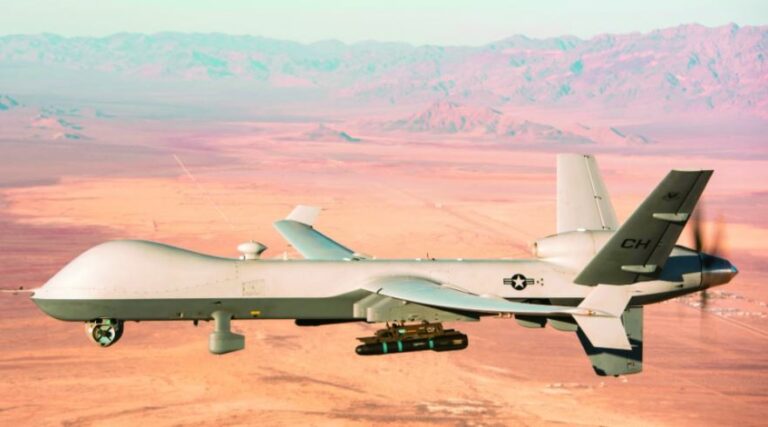After the supply of 24 French Rafales, the upgrade of 84 F-16s to Viper, and the launch of the inclusion of 20+20 F-35 fighter aircraft in the Air Force, Greece is preparing to enter into the field of drones and Unmanned Aerial Vehicles (UAV) by acquiring three American UAVs of the MQ-9 Reaper type on the one hand, and on the other hand discussing with the Israelis the purchase of the most advanced type of Heron (already used by the Armed Forces), Heron-TP, with the capabilities of conducting offensive missions since they can also carry missiles.
In an attempt to close the emerging “gap” in the specific weapons systems between the Greek and Turkish Armed Forces, the Ministry of National Defence appears to be spending significant sums in order to prevent the threat they pose to Greek sovereignty in the Aegean and the SE Mediterranean. At the same time, another aspect of strengthening the Armed Forces with Unmanned Aircraft is related to the creation of a suitable operating environment in view of the inclusion of the F-35 in the Air Force from 2028, as the philosophy governing the use of these fighters wants them to frame and work with UAV systems and drones.
In view of this decision, already at the beginning of the week, the programme for the acquisition of three MQ-9 Reaper type UAVs (in Greek “reaper”) was submitted to the Parliament’s Arms and weapons Committee, with their total cost, together with the two ground control stations estimated at approximately 340 million euros. These UAVs can monitor the “enemy” by transmitting real-time imagery of the field to the operations centres, collect information, and also participate in search and rescue operations, having the ability to remain without refueling in the air for up to 48 hours and a radius of action up to Cyprus.

According to information, during the closed-door briefing held last Monday by the political and military leadership of the Ministry of Defence to the members of the committee, the Chief of the Hellenic National Defence General Staff, Konstantinos Floros argued in favour of the acquisition of the three MQ-9s, stressing that they would cover at a high degree the country’s surveillance needs. He characterised them as necessary in order to have a real-time operational picture, both in the Aegean and in a large part of the Mediterranean, regarding the enemy’s movements.
At the same time, the Ministry of Defence appears to be in advanced talks with Israel for the supply of Heron-TP-type UAVs.
These systems have the ability to mislead enemy UAVs, interfere with their guidance system and disorient them, or even hack them by gaining control of them. In this context, it was not just by chance that Floros met last Wednesday in his office with the representatives of the Israeli companies Rafael Advanced Defense Systems Ltd and Aeronautics Group, which produce the specific systems.

The Air Force has gained considerable experience in the use of Herons, which it has subleased for three years from Israel and for about a year now they have been operating from Skyros. These UAVs are often used in ISR (Intelligence-Surveillance-Reconnaissance), information gathering, surveillance and reconnaissance missions giving the possibility to control the Greek archipelago not only at the level of the Armed Forces, but also to improve border guarding and additional efficiency in missions of search and rescue by the Coast Guard. They develop a speed that exceeds 200 km, having the ability to fly continuously for up to 52 hours, at a height of 35,000 feet, with their “eye” extending even beyond 30 miles.
Ankara, having turned the widespread use of drones and Unmanned Aircraft into a basic tenet of its aggressive policy against Greece, appears recently to be using them in ever greater numbers and frequency, in missions of surveillance and challenging Greek national airspace, espionage, disorientation and even “locking” units of the Armed Forces.
According to analysts’ estimates, Turkey is among the top three countries with the most experience in using UAVs at the level of military operations, having deployed such systems on all the hot or cold fronts it has opened, from the SE Mediterranean and Syria to Libya and recently Azerbaijan. It appears to have an expanded network of UAV bases of operations, several of which are located either near the shores of the Mediterranean (Incirlik, Gaziantep) or in the Aegean (Dardanelia, Dalaman). In addition to these bases, Ankara has reportedly established special facilities to service UAVs at least seven airports in the last two years alone.
Ask me anything
Explore related questions





